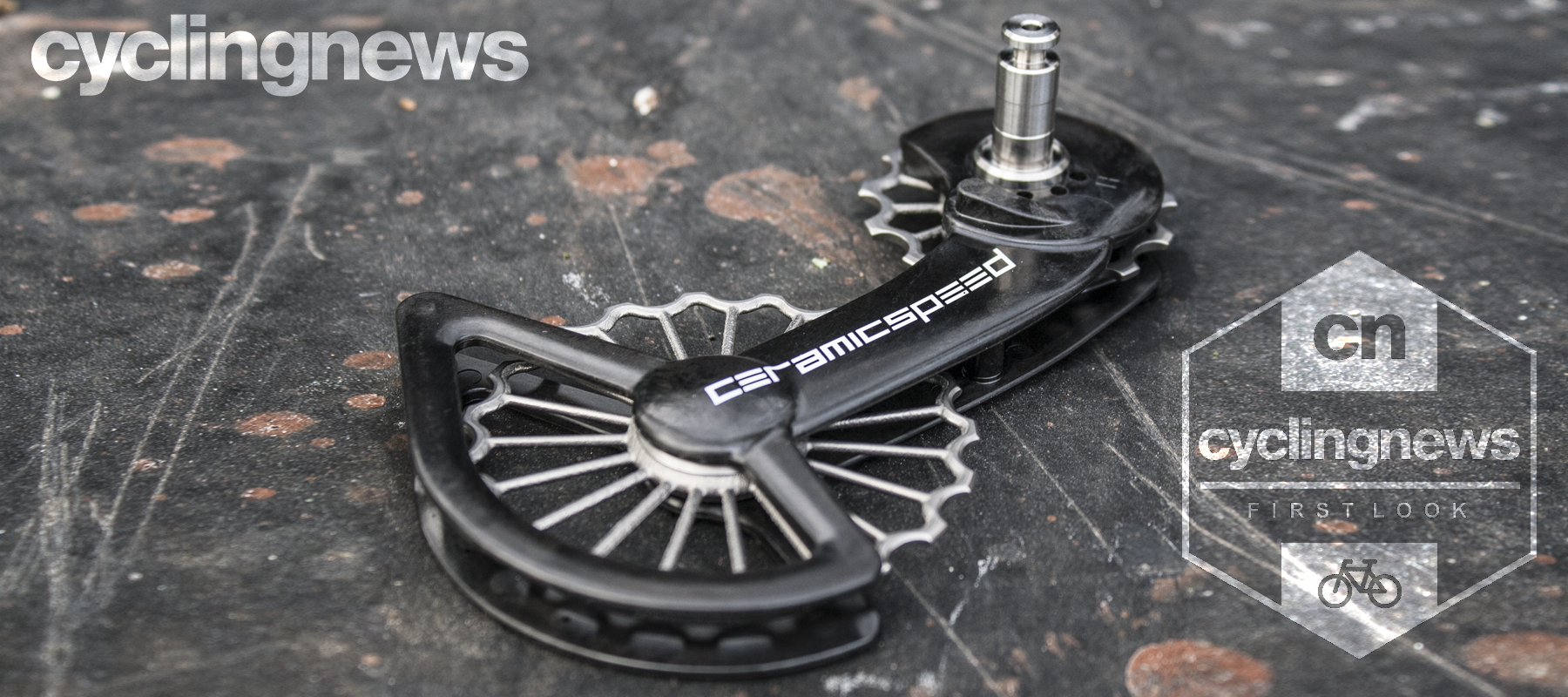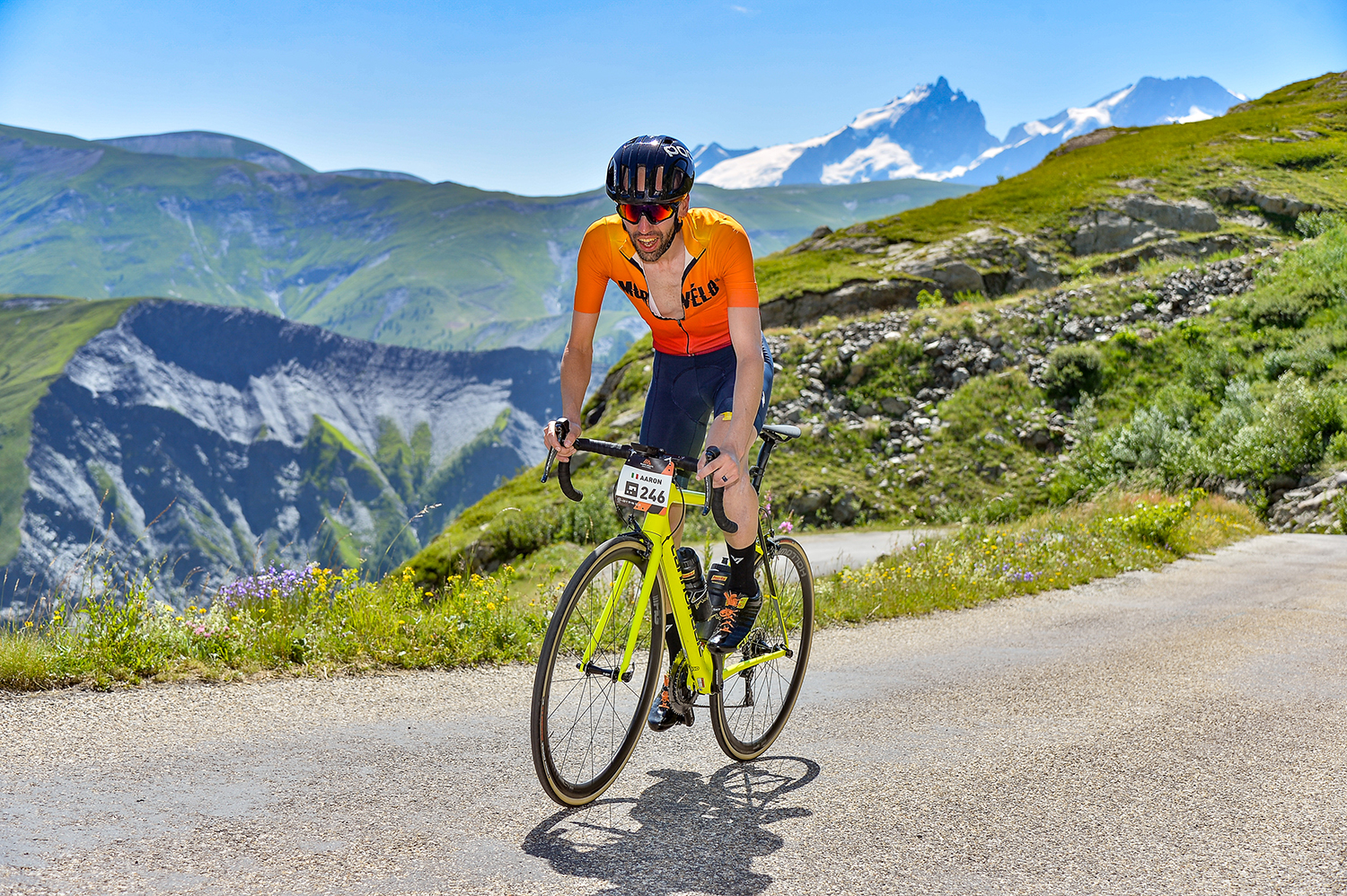Early Verdict
An achingly beautiful yet painfully pricey upgrade that's hard to justify over a regular pulley wheel system
Pros
- +
Beautifully designed derailleur cage and 3D-printed pulley wheels
- +
Ceramic bearings
- +
Easy installation
- +
Options for most derailleur designs
Cons
- -
Ridiculously expensive
You can trust Cyclingnews
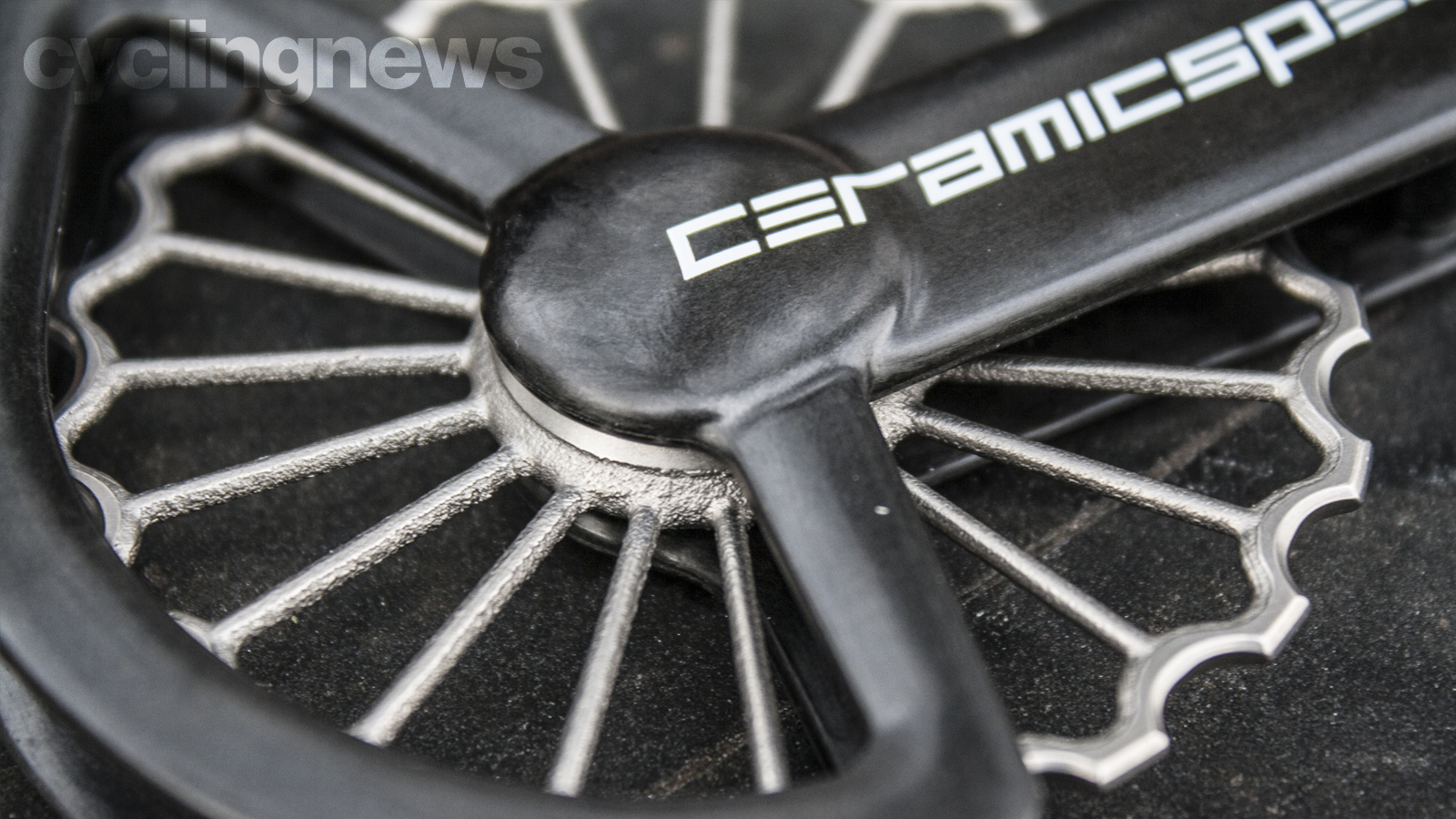
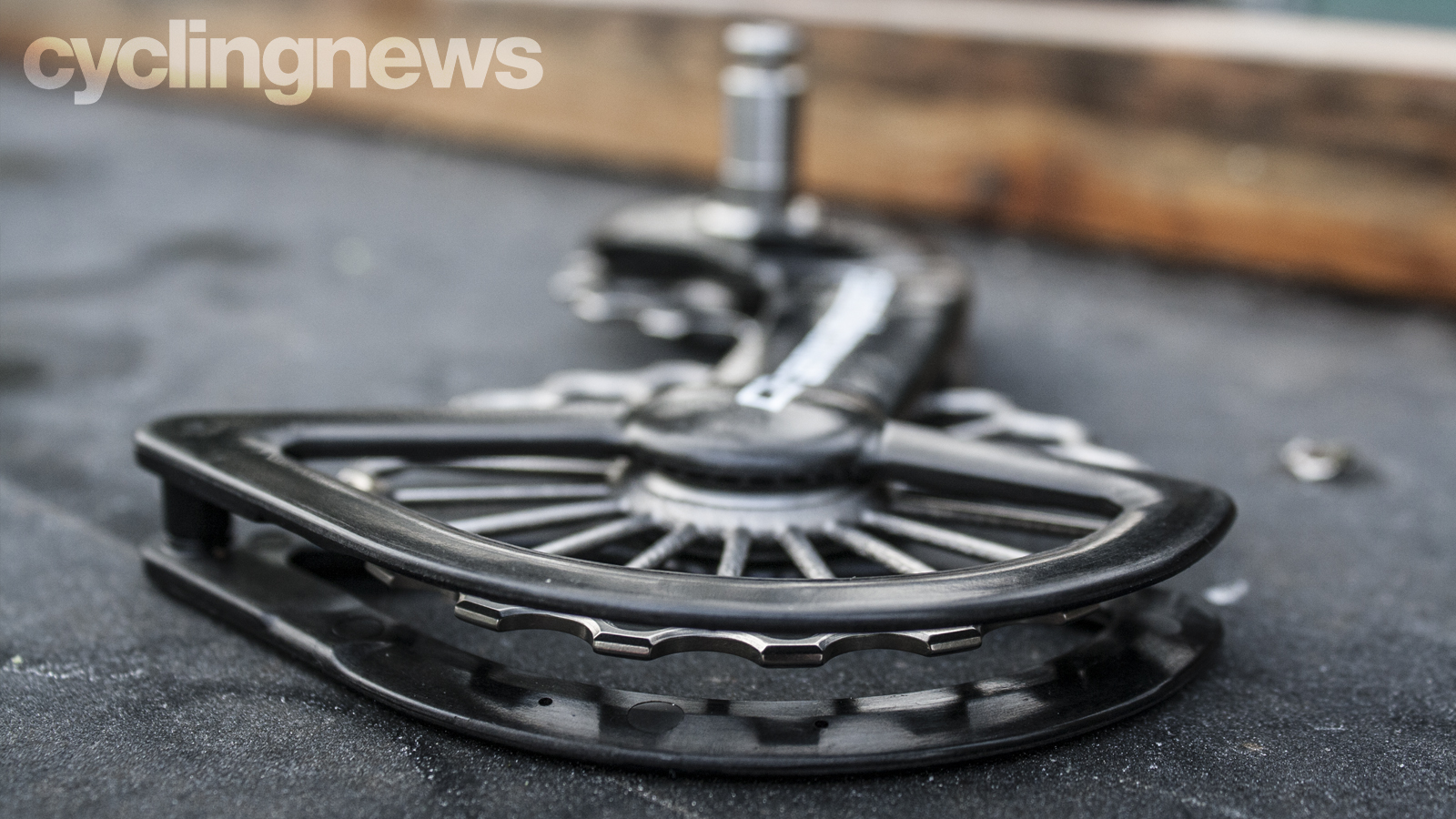
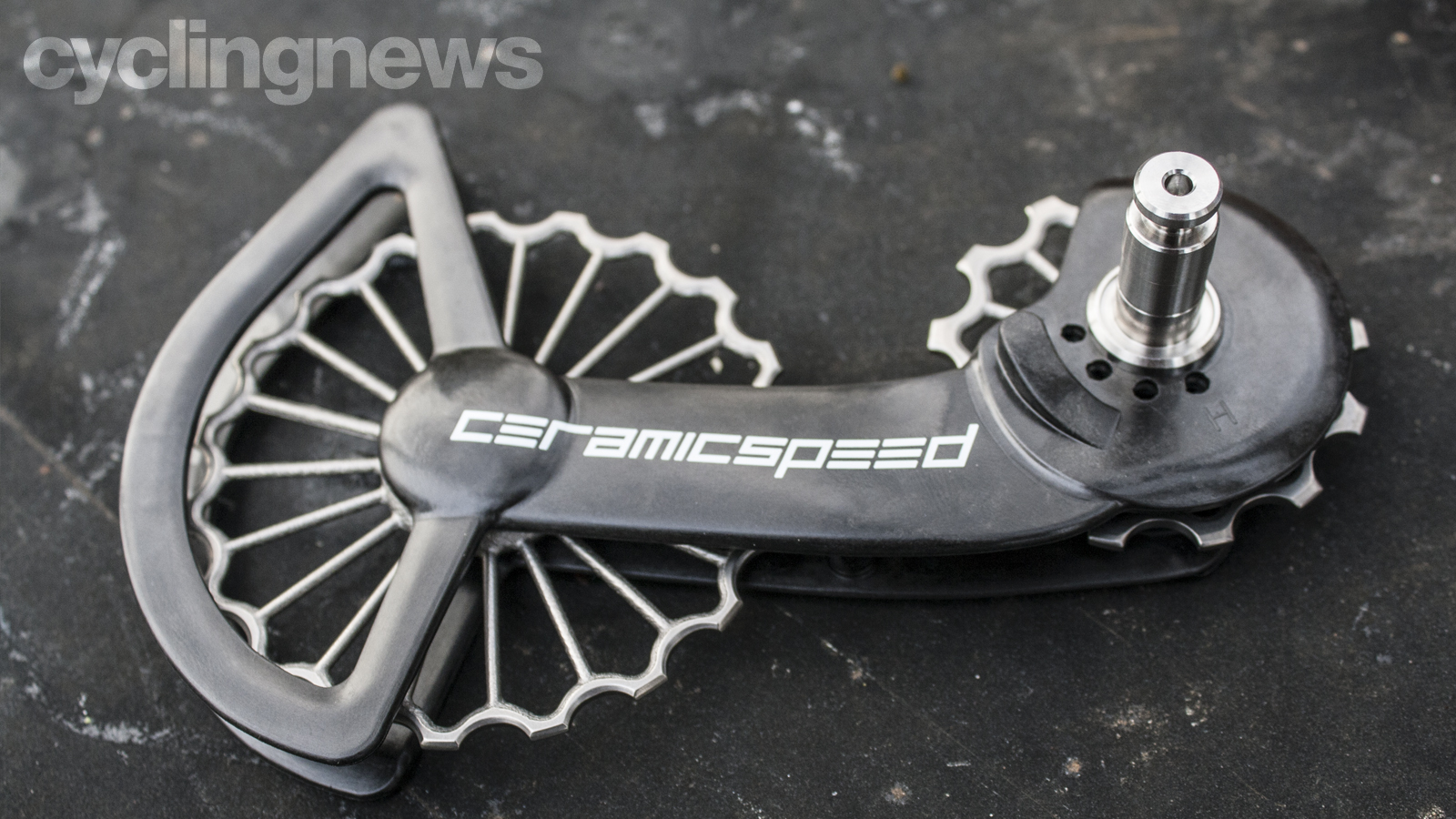
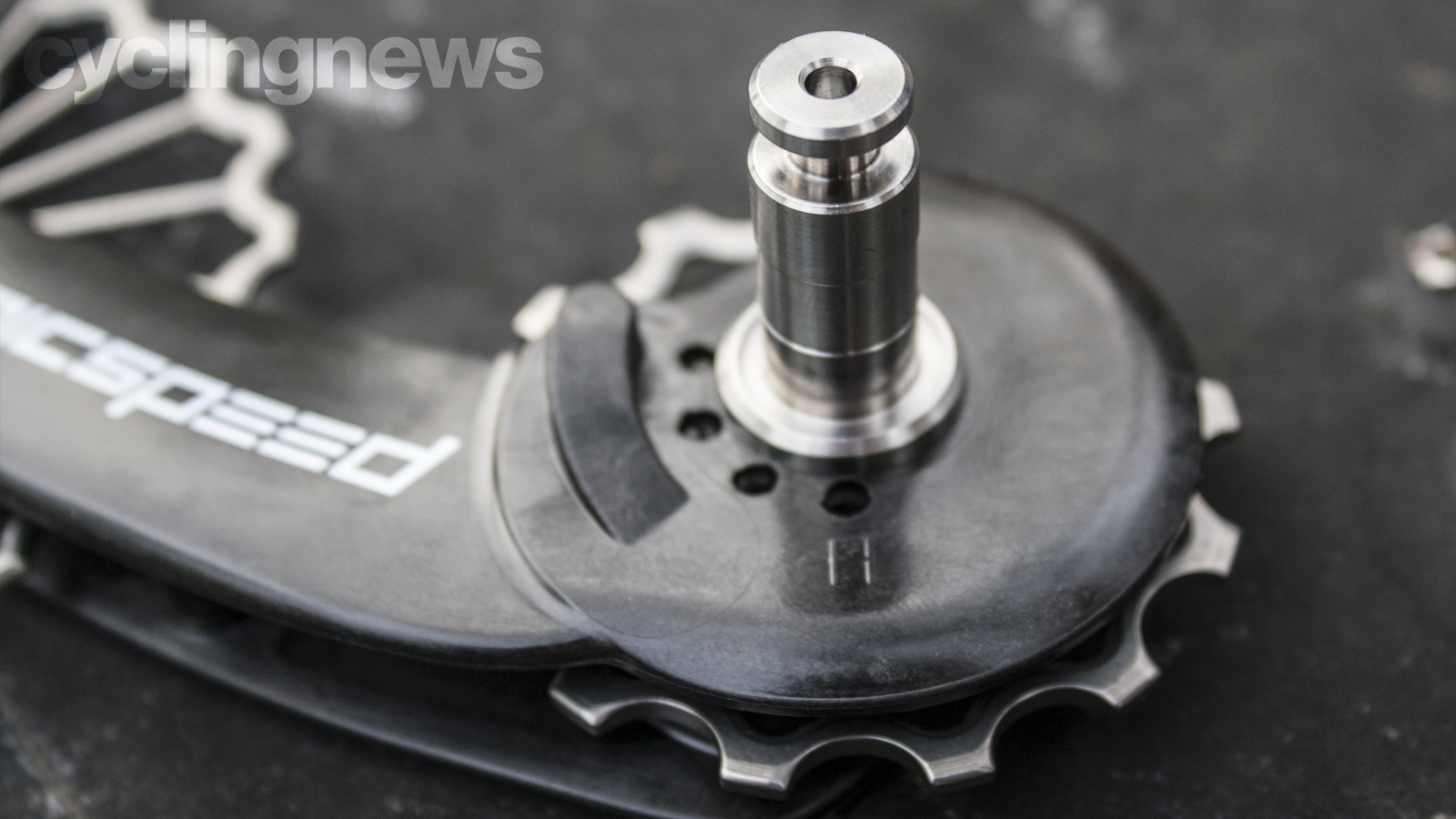
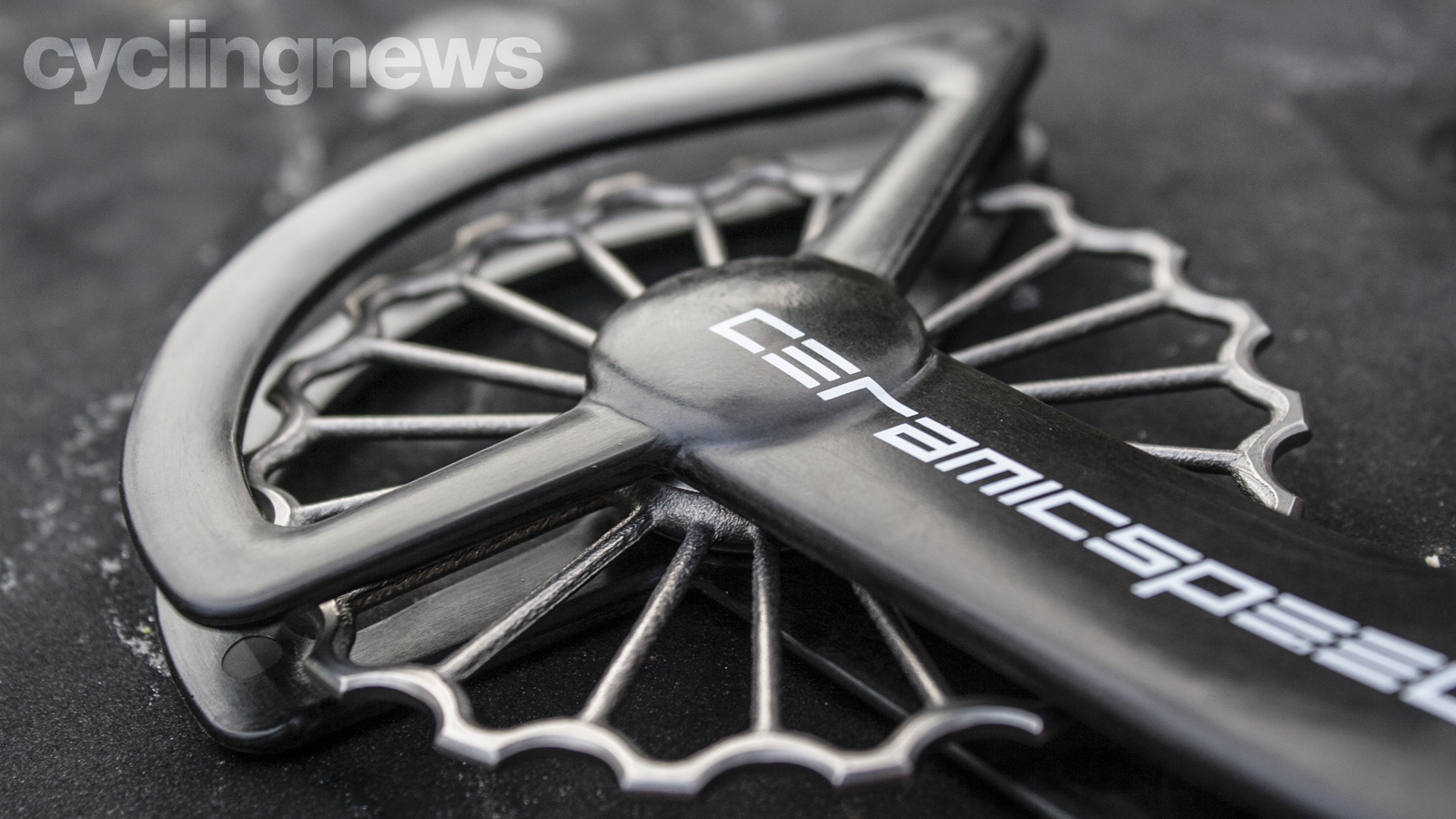
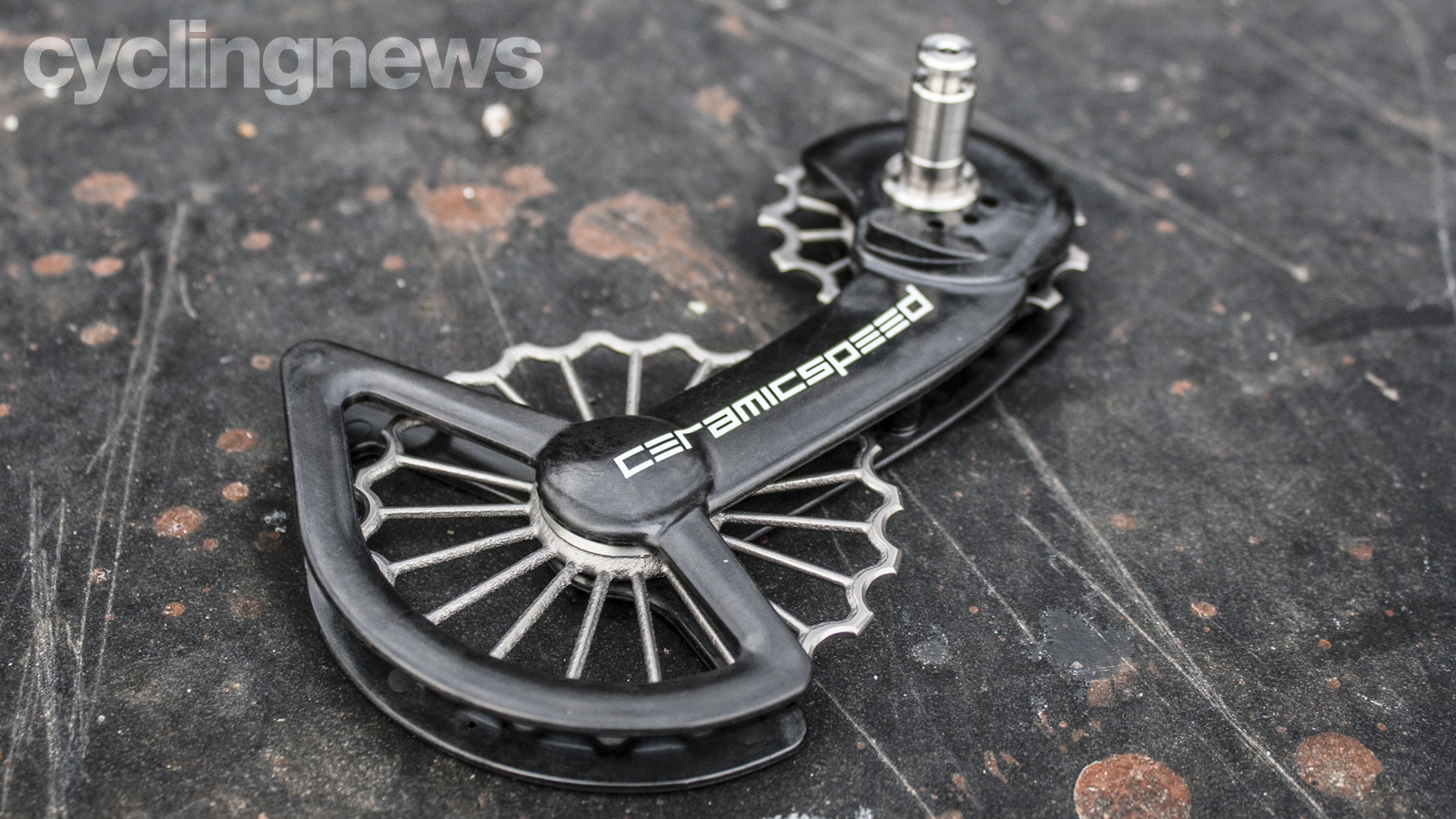
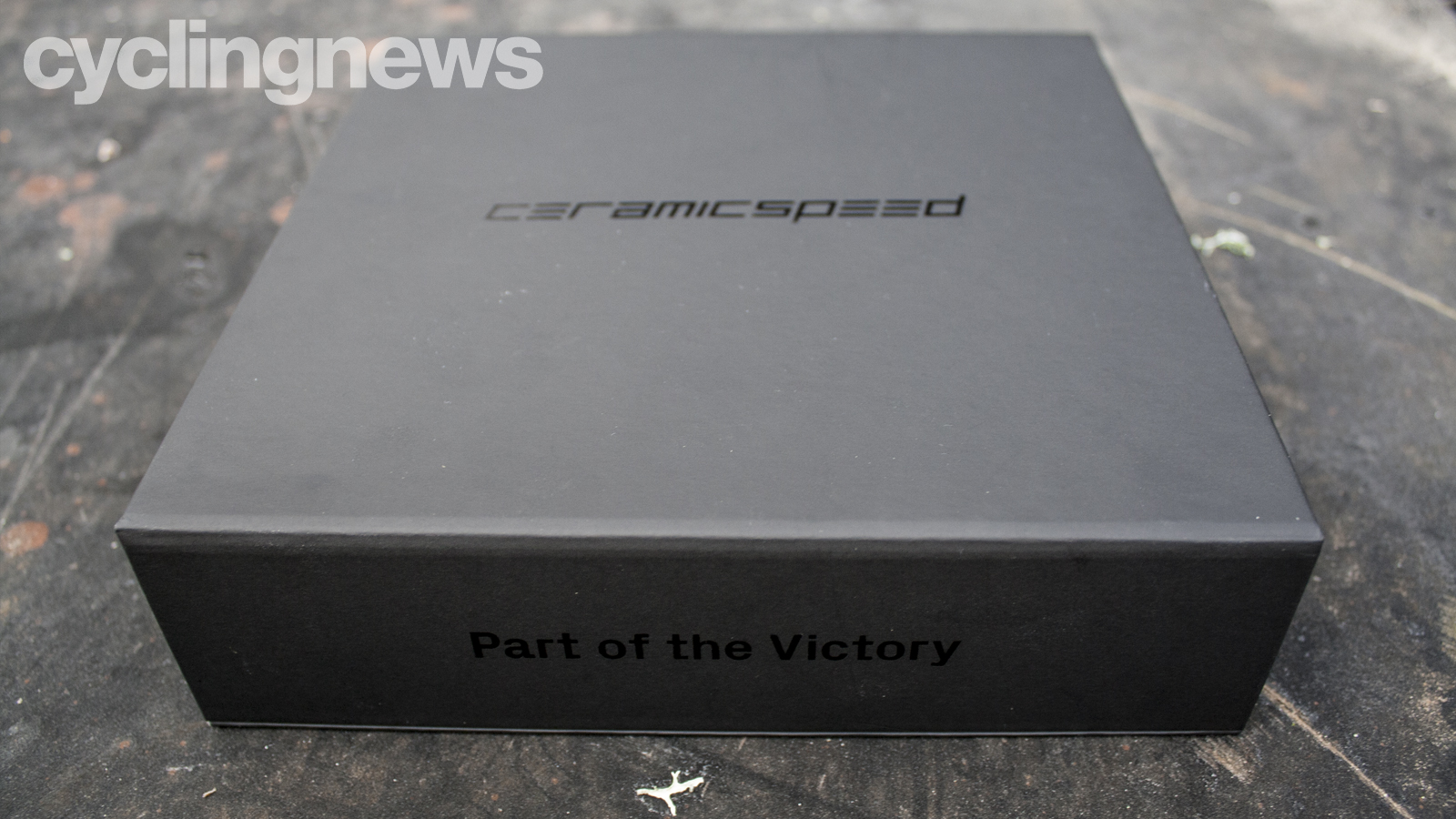
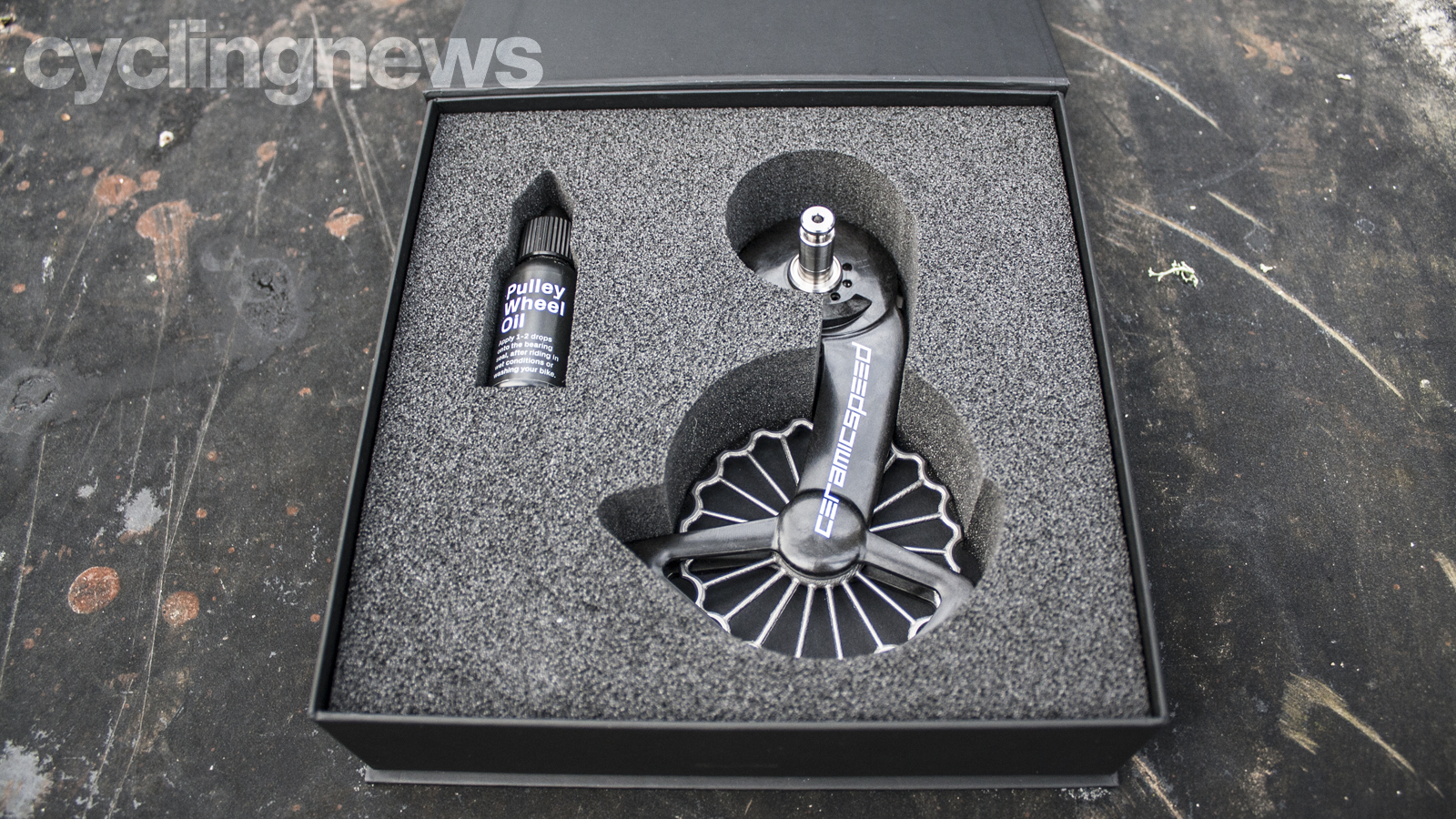
The CeramicSpeed oversized pulley wheel (OSPW) system is not a particularly new concept having been brought to life by the Danish bearing manufacturer back in 2015. Since then it's garnered a significant following, particularly in the elite and professional ranks where marginal gains have become a way of life.
This iteration of this OSPW system - the 3D-printed Ti - has ramped things up quite significantly in terms of visual clout, materials used in its assembly and the 3D manufacturing process. But, at €1,500, it costs three times as much as the 'regular' €499 version which is essentially the same product sans the fancy jockey wheels and coated ceramic bearings.
Regardless of the exorbitant sticker price, however, few can dispute it's an achingly beautiful piece of engineering. We take a closer look at what makes it tick, erm, spin.
- Road bike groupsets: a comprehensive guide
- Shimano road groupsets explained
- SRAM road groupsets: range, details, pricing and specifications
- Campagnolo groupsets explained
Design and aesthetics
So what's in the box? Well, the Danish brand is all about theatre and its products and packaging reflect this notion - take the CeramicSpeed Driven concept for example. As the halo offering in the OSPW portfolio, the 3D-printed Ti is presented in a more sophisticated boxset than the regular models, where a premium matte-clad packaging design complete with emboss-varnished CS insignia take centre stage. It's all very refined. Lift the magnetised box lid and you'll find the OSPW system as well as a small bottle of pulley wheel oil nestled within the foam cut-out.
The CeramicSpeed 3D-printed Ti OSPW system pictured here was sent to us for photography purposes only - we, unfortunately, won't be sampling this piece of bicycle exotica based purely on its value but that's okay as included in the delivery was the 'cheaper' €539 version which we are allowed to physically test. The differences between the Ti and regular OSPW are subtle - both versions utilise the same mottled polyamide-carbon-fibre derailleur cage design but differ by way of the pulley wheel design and bearing treatment.
Closer inspection reveals its hallmark feature: the rather ornate 3D-printed titanium pulley wheels. Like the other (Shimano-compatible) models in the range, the pulley wheel arrangement comprises a 13T upper and 19T lower wheel - which is by far the most spectacular-looking design in the range. The size ratio of pulley wheels differs from manufacturer to manufacturer based on stock derailleur geometry and cycling discipline.
- First eRacing pro team partner with CeramicSpeed
- CeramicSpeed's new UFO Drip lube drops price, improves efficiency, speed
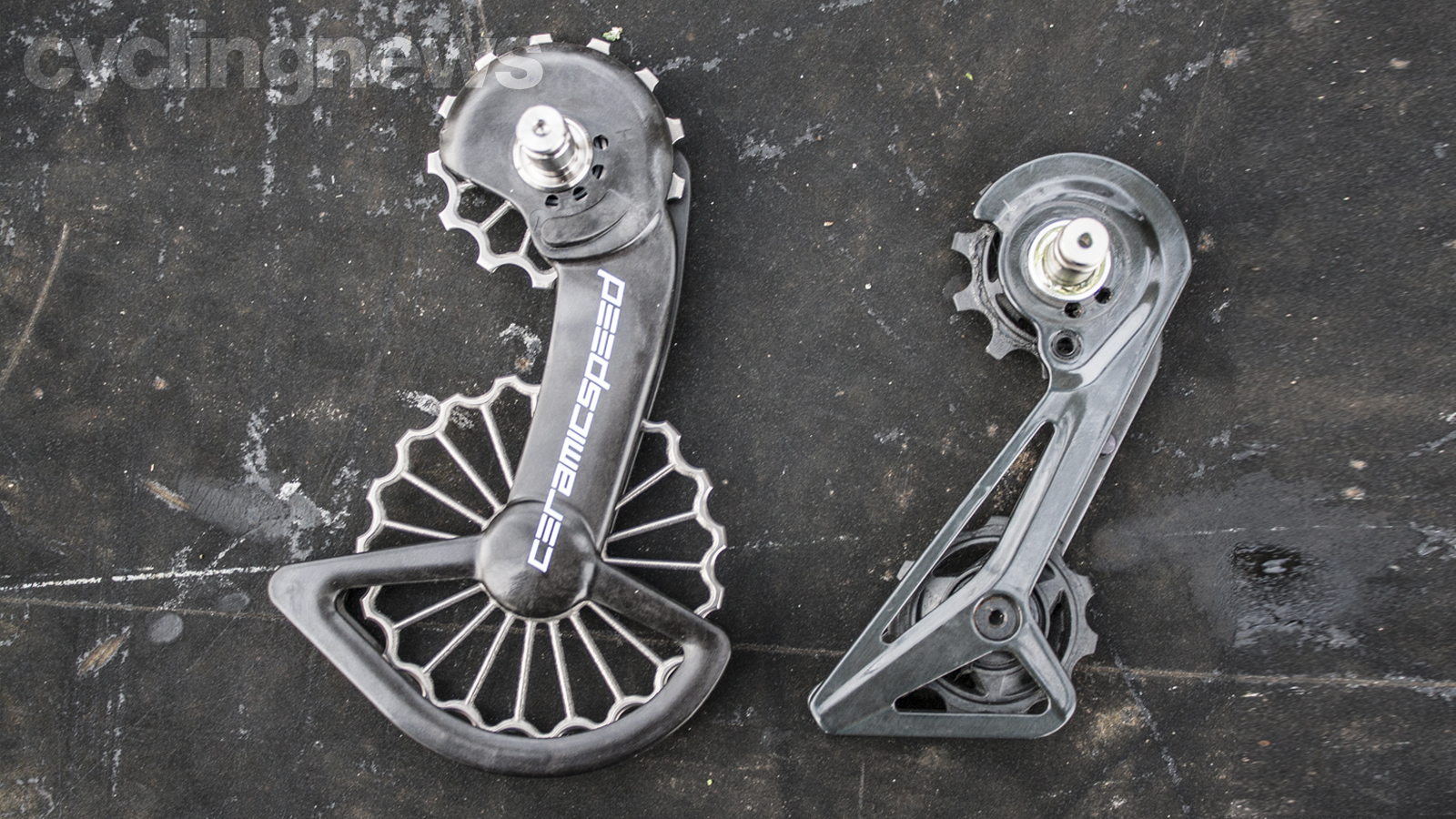
Is bigger really better?
Of all the companies dabbling in this dark art, CeramicSpeed is at the forefront of contemporary ceramic bearing technology and has invested heavily in R&D claiming the OSPW upgrade can provide energy savings starting from 2.4 watts over standard systems. While many pundits have been quick to dismiss these claims, CS OSPW systems can be found on the Factor bikes of Israel Start-Up Nation, the Wiliers of Astana-Premier Tech as well as the Canyons of the world's first professional indoor cycling team Canyon Esports, proving there are tangible benefits to be had.
According to CeramicSpeed the 13T upper and 19T lower pulley wheel configuration not only reduces chain-link articulation but also thwarts friction in the derailleur by 40–60% when compared to the standard pulley wheels. That's quite a claim so why don't more pro outfits use it not to mention esteemed drivetrain manufacturers such Shimano, SRAM and Campagnolo produce such systems? Well, that could come down to a number of reasons ranging from drivetrain sponsorship agreements of professional teams to incompatibility issues and manufacturer priorities.
In terms of weight, the 3D-printed Ti OSPW tips the scales at 76g, which is around 30g heavier than a stock Shimano Dura-Ace R9170 Di2 twin-11T pulley wheel system (46g). The longer cage does allow you to fit a bigger cassette - up to 32T - which does offset the weight penalty to a certain degree.
Early impressions
There's no denying the premium nature of CeramicSpeed's 3D-printed Ti OSPW system - for practically the same money you can purchase a complete Shimano Ultegra R8070 Di2 11-speed groupset. In terms of application and pricing, it's not something that will find favour with recreational or sportive riders but rather those looking to refine and finesse their setup in a quest to unlock every last watt. And while this relegates its appeal to a small portion of the market, if it's status and watt savings that you're after the 3D-printed Ti OSPW is just for you.
Over the coming months, we'll be putting the cheaper-yet-still-very-costly €539 coated version (which uses a unique coating formula that covers the bearing races and makes them 75% harder than steel) to the test in a bid to ascertain whether or not it can provide any tangible benefits to the riding experience. Impressions to follow soon.
Tech specs: CeramicSpeed 3D-printed Ti OSPW system (Shimano 9100/8000)
- Price: £1,350 / €1,500 / $1,830
- Weight: 76g
- Construction: Titanium pulley wheels and bolts, polyamide-carbon-fibre cage
- Claimed power saving: Up to 2.4 watts
- Warranty: Six years
Aaron was the Tech Editor Cyclingnews between July 2019 and June 2022. He was born and raised in South Africa, where he completed his BA honours at the University of Cape Town before embarking on a career in journalism. Throughout this career, Aaron has spent almost two decades writing about bikes, cars, and anything else with wheels. Prior to joining the Cyclingnews team, his experience spanned a stint as Gear & Digital editor of Bicycling magazine, as well as a time at TopCar as Associate Editor.
Now based in the UK's Surrey Hills, Aaron's life revolves around bikes. He's a competitive racer, Stravaholic, and Zwift enthusiast. He’s twice ridden the Cape Epic, completed the Haute Route Alps, and represented South Africa in the 2022 Zwift eSports World Championships.
Height: 175cm
Weight: 61.5kg
Rides: Cannondale SuperSlice Disc Di2 TT, Cannondale Supersix Evo Dura-Ace Rim, Cannondale Supersix Evo Ultegra Di2 Disc, Trek Procaliber 9.9 MTB
What is a hands on review?
'Hands on reviews' are a journalist's first impressions of a piece of kit based on spending some time with it. It may be just a few moments, or a few hours. The important thing is we have been able to play with it ourselves and can give you some sense of what it's like to use, even if it's only an embryonic view.
